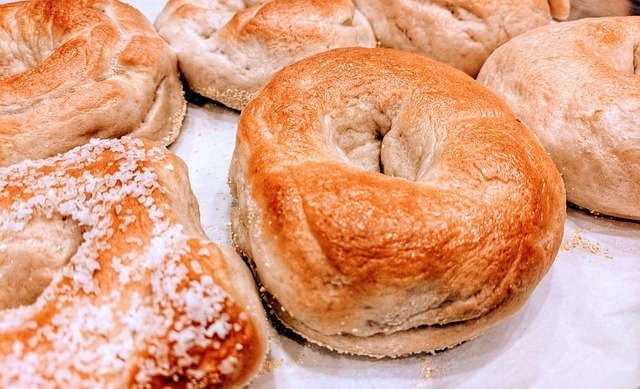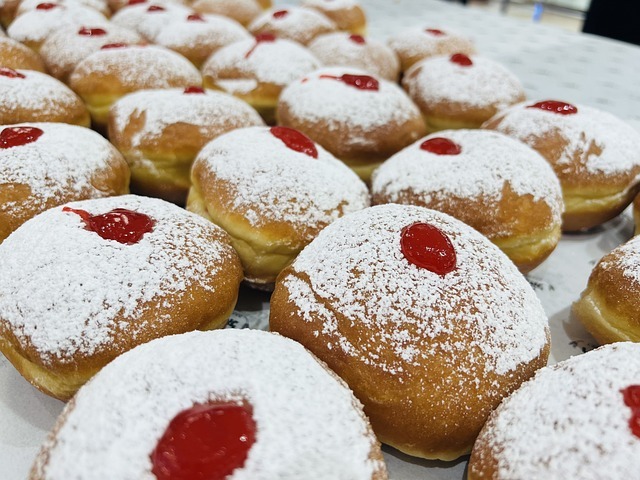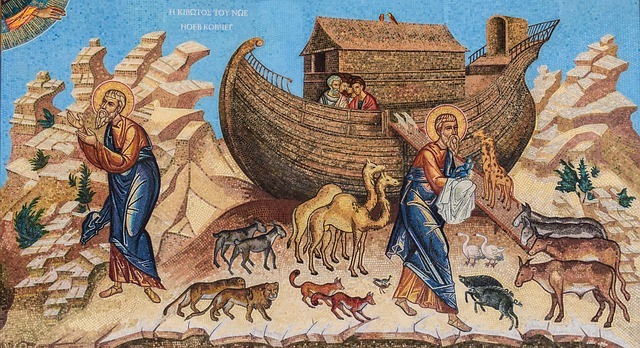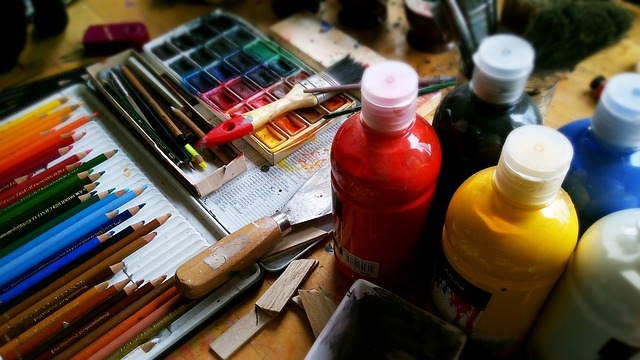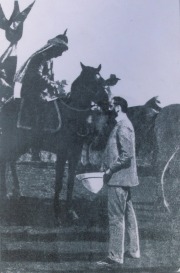December 2022
Top Twelve Famous Jewish Dishes by Ethnicity
By Shalom Goldfarb | Submitted On July 06, 2010
When speaking about Jewish food and eating habits, it’s hard to isolate a single strain. That’s because Jews have been spread out among so many different countries and cultures ever since their exile in the year 70CE that you’d have to talk about each Jewish ethnic sect separately to make any sense of Jewish eating habits and Jewish food. Each Jewish ethnicity took recipes and dishes from its host country, whether it be Africa, Europe, Yemen, or the Orient. So what we’ll do is a top three Ashkenazi (European) foods, top three African foods, and top three Yemenite foods, and top three Oriental Jewish foods.
The most stereotypical Jewish food is that popularized by the Ashkenazi ethnic sect, coming out of Europe and especially Germany and Eastern Europe. Jewish eating habits from there are influenced by constant poverty that struck the Pale and forced the Jews to eat cheaply. The dishes that became a mark of the poor man back then are now cultural phenomena, mostly because Ashkenazi Jews are the most heavily Westernized of Jews, and the most in contact with American culture. Therefore, when an American thinks “Jew” he thinks Ashkenazi Jew.
1) Cholent. This is a Yiddish word that I just found out from Google Translate means “spares.” I thought it meant stew, but it doesn’t. This makes a lot of sense, because spares are essentially what cholent is. The actual food is pretty much any scrap you can put in a slow-cooker, vegetable, meat, grain (usually barley because it’s cheap), and water, chuck it in there and simmer it on low for 24 hours. It’s incredibly easy to make, requires no effort, and is a good dish if you have a bunch of refrigerator scrap left over you don’t want to throw out. You also go to your butcher and take his scrap (bones, fat, some meat chunks cut off that nobody wanted because they’re not very good), and your cholent comes out really cheap. Since it’s cooked for so long, though, everything turns out delicious in the end. For authentic Ashkenazi cholent, you’ll need some intestine stuffed with pureed vegetables. This can get dangerous if you don’t clean it properly.
2) Gefilte Fish. Once again the cheap stuff. Carp is such a bony fish that it’s nearly impossible to eat. This is why it’s so cheap, and this is also why gefilte fish is made out of carp. In order to get rid of the bone problem, Jews of Ashkenaz just put the entire thing in a grinder and made fish puree, re-stuffed the skin, and called it a day.
3) Gribinis. Cheap again? Of course. Go to your butcher and ask him to give you the leftover skin for free. He’ll probably do it. Then you put a bunch of oil in a pan and fry the stuff up with some onions. Very, very bad for you, but very, very good.
We can see now how cheap Ashkenazi Jews are, especially now that they’ve made everyone culturally aware of these foods and now everyone thinks they’re delicacies or something. I’m an Ashkenazi Jew, so it makes me laugh. Let’s move on to the Sephardim.
1) Hamin. This is a straight up Hebrew word meaning, “Hot stuff.” Doesn’t necessarily mean spicy, but it’s basically cholent with different ingredients. Instead of garbage, the Sephardim use rice in place of barley, and hard boiled eggs instead of meat scraps. Sephardim also actually use spices, which Ashkenazi dishes don’t usually have much of besides salt and pepper.
2) Shakshouka. I’ve had this made really horribly (Israeli Army) and really amazingly (my wife). Basically tomato sauce, paprika, baharat (google it), cilantro, parsley, onions, and eggs fried over easy in the juices. If made right, it’s really great stuff. If made badly, it tastes like tomato-flavored rubber tires from your local mechanic.
3) Sahlav. This is a rose-water based thick pudding-like drink that tastes like a combination of perfume and Pier1Imports smell. I personally think it’s gross.
Am I biased towards Ashkenazim? Probably. On to Africa.
1) Injera. I had this at an Ethiopian absorption center in northern Israel. It’s a savory pancake, and it’s pretty good. I hear it’s made from tif flour, a grain found in Africa.
2) Waat. A spicy sauce made of meat, vegetables, and beans. It’s what you put in injera.
3) Taj. Home brewed honey wine with lemon juice.
On to Yemen? Let’s do it.
1) Lamb’s head. This is exactly what it sounds like. Yemenites eat it on Rosh Hashana instead of a fish head. They basically roast the whole thing and eat it off the skull. I intend on getting one this year to try it out.
2) Jahnun. Yemenite Jewish pastry, fillo dough wrapped in a spiral and coated with vegetable oil and fried. It’ll make you sick, that I guarantee.
3) Arak. There’s an argument over whether this is primarily Sephardic or Yemenite. But either way, it’s an anise flavored highly alcoholic beverage, my favorite drink, though I mix it with coke.
Shalom Goldfarb is the editor of Judaica Worldwide, a portal of educational material on Judaism, Judaica, and Jewish holidays. There’s also some Jewish humor on the blogroll, so check it out!
Article Source: https://EzineArticles.com/expert/Shalom_Goldfarb/647026
The Tradition Behind Traditional Jewish Food
By Amber Jonas | Submitted On August 22, 2006
Over the years, traditional Jewish foods have found their way into contemporary American eating habits. Perhaps you’ve run to a deli or a grocery and ordered a quick lunch of corned beef on rye with a kosher dill on the side, or maybe you stopped for a quick bite of a bagel rushing to work in the morning, or maybe a sweet blintz is more to your liking. Even a run through most store bakeries show you stacks of challah bread.
Most Americans don’t give what they eat a second thought, and dismiss traditional Jewish food as just another form of fast food. Eaten on the run, there is little thought behind the food and it’s traditional place in Jewish culture and cuisine. This only clarifies how well assimilated food traditions are in America.
Perhaps the quintessential traditional Jewish food is the bagel. The traditional aspect of the bagel is found in dubious historical fact. The bagel is said to have originated in Vienna. Created by a Jewish baker to honor the Polish King, Jan Sobieski III, for heading the Polish cavalry in a charge that saved Vienna from invasion by the Turks in 1683, the shape of the bagel is supposed to mimic the stirrup (called a beugal) of King Jan’s saddle. The facts are, there was a Polish King Jan III, he did lead a cavalry charge to defend Vienna from invading Turks, and there were Jewish bakers in Vienna at the time. However, there is reference to a food named “beygls” as early as 1610, found in paperwork from Krakow, Poland. In addition, “bugel” was a Yiddish word which was used to describe a round loaf of bread. That aside, the bagel has been eaten by most eastern European Jews since the 1600’s. It came to America with the Ashkenazi in the late 1800’s, and is considered by that community to be traditional Jewish food.
Though not sold in all delis across America, the moniker “Jewish Penicillin” is given to down home chicken soup. It is hard to consider such a universally eaten soup as Jewish, yet, many Jewish families made it through many centuries of hard times all over the globe on chicken soup. The traditional Jewish food is a clear, or pale yellow broth, eaten with bits of chicken floating in it, most often with broad egg noodles. At one point in time, in most middle class American Jewish homes, chicken soup was a once a week staple. Most people will agree that they eat chicken soup when they have a cold, and there is actual laboratory evidence that homemade chicken soup can actually make the length of a cold shorter by days.
If people took the time to stop and think about their food choices, they would agree they eat some type of food on a weekly basis that they would consider traditional Jewish food. They might not know the history behind the tradition, but they would see the food as a Jewish staple.
Thanks for reading. If you found this article helpful be sure to check out more kosher information [http://www.jewishhomecooking.com/jewisharticles.html], tips, and more articles about Jewish cooking on my website: [http://www.jewishhomecooking.com].
Article Source: https://EzineArticles.com/expert/Amber_Jonas/45705
Jewish Art Helps Build Cultural Inclusion
By Mark Etinger | Submitted On December 31, 2011
The depth and history of Jewish artwork can easily compete with any other culture’s. There is a presence of Jewish art seemingly on every continent on the planet. This is of course because Judaism has such a wide reach and the spiritual stirring of Judaism is custom-built to be shared through artistic expression. In practically every discipline and subsection of art there is a Jewish imprint. A tour through the history of any and all art forms from impressionism to rap music, from sculpture to stand-up you will find at least a handful of vitally significant Jewish artists. The spreading of this culture has had a great effect on all art and on the general acceptance of Jewish culture throughout the planet.
Art is a great communicator for everybody. The Jewish people are hardly the first religious, racial or cultural group to utilize their sensitivity to art to further their cause. African-Americans did the same thing in the 50’s and 60’s. For the Jewish people Jewish art was a way to make their culture which for many seemed quite different seem not so far removed. The work of pioneering comedians on the Vaudeville circuit did a lot of the heavy lifting in sewing Judaism into the stitch-work that built the United States of America.
These days contemporary Jewish art is all over the place. A wide array of younger “pop” artists utilize both traditional elements of Judaism within their modern artistic modes. It is a great way to include a lot of different people, educating them about the specifics of Jewish culture and perhaps correcting for some untrue stereotypes in the process. It is a fantastic way to make everyone feel more at ease and understanding of the Jewish people and assures that the work has a greater impact than simply looking cool.
Contemporary Jewish art is always happening. It almost seems like an absurdly obvious thing to say. Anyone who has been to a gallery of note, turned on their television or listened to the radio has heard, seen and experienced a wide variety of Jewish art for themselves every time they have done these things. It is the magnificent nature of America that through these measures and this sort of work a people can become a significant part of the conversation. With the help of art Jewish people have been able to enter the worlds of business and politics. As in many cultural shifts art is used to grease the wheels and make everyone more comfortable with different cultures. Then things become a lot fairer for everyone.
The work of Jewish artists who make must-have pieces of contemporary Jewish art are currently available at very affordable prices. The theme of contemporary modern Jewish art [http://www.jewishpopartblog.com/] mixed with old world traditions is quickly growing in popularity.
Article Source: https://EzineArticles.com/expert/Mark_Etinger/256238
Jewish Art – Not What You Would Expect
By Odelya Natan | Submitted On October 15, 2010
Many believe that the very term “Jewish Art” is contradictory to itself – How can art be Jewish? They wonder. This perception derives from the awareness to the explicit prohibition mentioned in the Ten Commandments: “Thou shall not make for yourself a carved image–any likeness of anything that is in heaven above, or that is in the earth beneath, or that is in the water under the earth.’.
Jewish Art- forbidden?
However, seeing this forbiddance as block that necessarily prevents art from being created is wrong – not only that the commandment can be interpreted in many ways (for example, the prohibition might concern the obligation not to bow before any image, sculpture, idol or figure and not relate to the actual forming of a sculpture or image) but even when it was understood in its more radical sense, the Jewish people did create many kinds of Jewish art and even placed their creations between the synagogue’s walls and on their sacred books. Flexibility and tolerance towards man or animal shaped figures (on stamp rings, public baths and coins) is witnessed in many places in the Talmud and it is known that there were Rabbis who permitted synagogue paintings, even though there were some who were against it, together with the Christian opposites, who were also objecting to any kind of images or to using man or animal shaped objects.
Jewish art throughout history
Due to the variation in approaches, Jewish Art has progressed throughout the years, spreading in synagogues, sacred books, tombstones and people’s homes. Jewish artists kept reviving the biblical stories, creating drawings and relief works dedicated to significant historical or mythical events such as God’s revelation to Samuel, the creation of the world, Ezekiel’s vision of dry bones etc. Even before the Jewish emancipation and the bloom of the Enlightenment movement (Haskalah) Jewish artists specialized in drawing portraits, while it is known that one Jewish tutor from the 17th century advised every man to carry a portrait of their mother as a protection from the evil nature’s temptations.
How to define Jewish art?
It was in the middle of the 19th Century that acclaimed Jewish artists like Pissarro, Israels and Liberman broke into the wide world’s recognition. Since then and due to the general art’s influence on Jewish artists, culture scholars try to define what is Jewish art exactly: Is Jewish art made by anyone who is Jewish or perhaps art that deals with Jewish themes. Whether you relate more to the first or second definition, you are likely to discover in both a vast world of talent, craftsmanship and inspiration, all nursing from the Jewish foundations rooted 3000 years deep into human history.
Odelya is a content editor of several Jewish web sites and a specializes in Israeli and Jewish art and culture. Visit us at Jewish Art Today [http://www.jewisharttoday.com]
Article Source: https://EzineArticles.com/expert/Odelya_Natan/450806
Jewish Art Today
By Ronnie Goldberg | Submitted On November 03, 2013
Jewish art is a mixture of vibrancy and history coated with supreme taste of creativity. Most, if not all, the art pieces are untainted depiction’s of the Jewish nation’s vivid culture and ways of life.
Way back years ago, Jewish art revolved around Jewish music and literature. Visual art was not wholeheartedly entertained for the Jewish and was considered as “graven images”. This was not until the 18th century when a sudden growth of Jewish visual artists flaunted their visual artworks and was surprisingly appreciated by their people.
Amedeo Modigliani is one of the pioneering graphical artists of the 18th century who came from a Jewish family. His works include Gypsy Woman with Baby, Reclining Nude, and Girl with Braids. Most of his subject’s heads are sophisticatedly curved with swan-like necks and sloping shoulders resulting into a delicate and gentle impression.
Nowadays, Jewish art is not only limited to literature, music, and paintings, but it now covers decorative designs like accessories, ornamental fixtures, and embellished utensils. It has now evolved from narrow and limited works to limitless art work possibilities.
Israeli and Jewish artists today are currently renowned for their vibrant splashes of color and symbolic representations. These artistic symbolism’s play an integral part of Jewish culture and history. Jewish artistry is a vivacious representation of Jewish world incorporating a variety of traditions which make it special and outstanding. In addition, Jewish arts comprise a lot of meaning which holds fascinating significance to its culture and emits positive influences and energies to its audience.
Jewish people contribute a lot to artist in drawing inspiration for their art works since they are the living faces of Jewish culture, whether it be past or present.
Contemporary Jewish art is a combination of bright, bold colors that are rampant in pop art with the timeless and sophisticated images of its culture and its people. It is an ingenious exemplification of traditional Jewish ways with modern touches of art themes. Jewish art today is an appeal for a refined sense of aesthetic beauty that kindles and defies your perception of Jewish art.
Despite living in the twenty first century, with all its disturbing interferences and tempting opportunities, it is clear that the rocks that embrace the Jewish people together can never be broken. In fact, it is these traditions and culture that push us forward and motivate us to strive toward making ourselves better and being the light unto others as we continue influencing them to grasp progress without forgetting their ancestries and cultural heritage.
Today’s Israeli art has become a surviving witness of how the world changed from one generation to another. It is a delineation of images that bring traditional art to life suitable for modern age. It constantly reminds people that change does not necessarily mean forgetting where you came from. Jewish art gives us the privilege to pay homage to the preceding legacies and look back at our history through paintings and other works of art. Jewish art today is and will always be captivating, bold, and expressive.
Buy Jewish art streight from the artist studio. Each relief jewish art painting is made specially for you. Free shipping worldwide.
Article Source: https://EzineArticles.com/expert/Ronnie_Goldberg/1739361
The Land of Israel is no stranger to experiencing extreme water shortages. In 1898, Theodor Herzl, founder of modern Zionism knew that the Kaiser’s recognition was crucial for international approval of his plan to resettle the Jews in the land of Israel. All the Kaiser could muster was the observation: “The land needs water, very much water.”
Hertzl was not alone in showing concern for how the often acute water shortage problem could impact on the plight of the fledging Jewish homeland, being renewed after many thousands of years of exile. In more recent times, scant water resources has even been the cause of limited military action.
Israel has three main water sources: Lake Kinneret (aka. Sea of Galilee), the Mountain Aquifer and the Coastal Aquifer. The country also has KKL-JNF, which has increased Israel’s water economy to such an extent that it has been dubbed “Israel’s fourth aquifer”. However, the water level of the Sea of Galilee is considered to be key barometer upon which successive leaders of the State of Israel rely upon to decide what action needs to be taken to remedy any critical shortage, and there’s been plenty of them!
Accordingly, in recent weeks the general public in Israel has been greeted with the latest update of the water level of the Sea of Galilee. This week it stands less than a meter below the maximum level above which the abundance of the extra amount needs to be gradually released out of the lake. This is welcome news indeed!
